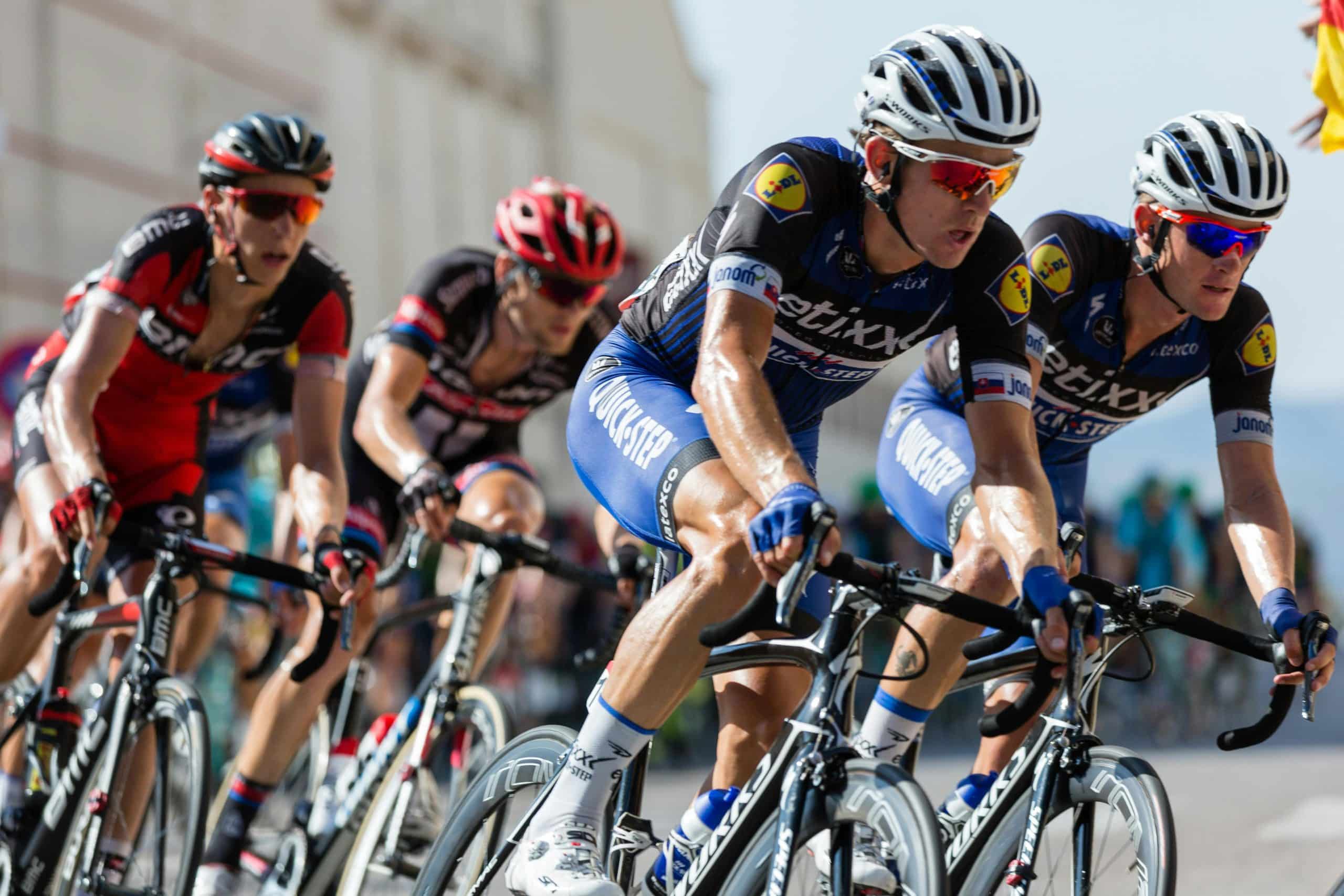How Are Neuromuscular Electrical Stimulation Devices Used in Cyclist Training?

In the world of fitness and sports training, neuromuscular electrical stimulation (NMES) devices have been growing in popularity. They’re being used with increasing frequency to enhance the performance of athletes in a variety of fields, including cycling. Before we delve into their application and effectiveness, it’s important to understand what exactly these devices are.
NMES devices utilize electrical stimulation to activate muscle fibers, promoting muscle strength and endurance. The application of an electrical pulse causes muscles to contract, mimicking the action that would occur during physical exercise. This allows for targeted muscle training, particularly useful in rehabilitation post-injury, or for enhancing specific muscle groups in competitive sports.
A lire aussi : What’s the Impact of Sport-Specific Meditation Techniques on Decision Making in Football Quarterbacks?
Understanding the Science Behind NMES
To understand how NMES aids in athletic training, it is essential to grasp the basic science behind it. When a muscle contracts during normal physical activity, it does so in response to signals from the brain. NMES mimics these signals, sending electrical impulses directly to the muscle which triggers contraction.
These electrical pulses can be adjusted in terms of frequency, intensity, and duration, allowing for customization based on individual needs and training goals. Researchers have conducted numerous studies to better understand how different parameters can be optimized for best results.
Cela peut vous intéresser : How to Design an Injury Prevention Program for Youth Competitive Gymnasts?
Indeed, a quick perusal of resources like PubMed and Crossref will reveal numerous articles and studies on the topic. Many of these highlight the benefits of NMES in enhancing muscle strength and endurance, aiding in faster recovery post-exercise, and potentially assisting in injury prevention.
Neuromuscular Electrical Stimulation in Cyclist Training
Cycling is a demanding sport that requires both cardiovascular stamina and strong muscles. Particularly for competitive cyclists, targeted muscle training is crucial for performance enhancement. That’s where NMES comes in.
By applying electrical stimulation to specific muscle groups — predominantly those in the lower body — cyclists can enhance strength training and improve their overall performance. Many cyclists also turn to NMES devices during their recovery periods, as these devices can help maintain muscle tone when active, strenuous exercise isn’t possible.
A study found on Google Scholar reported that cyclists who incorporated NMES into their training regimen demonstrated improved sprint performance. This is a clear testament to the effectiveness of these devices.
The Role of NMES in Injury Rehabilitation and Prevention
Injuries are a common hurdle for athletes of all stripes, cyclists included. A pulled muscle or a strain can put a cyclist out of action for weeks, if not months. This is another area where NMES devices show their worth.
When an injury occurs, the affected muscles often atrophy from lack of use during the recovery period. NMES can help counter this by providing the muscle with the ‘exercise’ it needs to stay active and strong. This can potentially shorten recovery times and get athletes back in the game sooner.
Moreover, by strengthening muscles and improving their endurance, NMES can also play a role in injury prevention. A well-conditioned muscle is less likely to sustain injury in the first place, making NMES an invaluable tool in an athlete’s arsenal.
Proper Use and Safety of NMES Devices
While NMES devices can be a powerful tool for cyclists, it’s important to use them properly to maximize benefits and avoid potential harm. Overuse or incorrect use can lead to muscle fatigue or even injury.
Proper use involves not only understanding the device and its settings but also knowing your own body. Every athlete is different, and what works for one person may not work for another. Consulting with a professional, such as a physical therapist or a trainer, can be beneficial in optimizing the use of an NMES device.
Safety is another important concern. NMES should never be used on broken or damaged skin, and the electrodes should never be placed on the front of the neck or over the heart. Always read and follow the manufacturer’s guidelines for use.
In conclusion, while the world of NMES might seem complex, the potential benefits for cyclists are clear. Whether you’re a seasoned pro or a novice just starting out, incorporating NMES into your training regimen could give you the edge you’re looking for. And with the proper use and safety measures, you can ensure you’re getting the most out of your device while minimizing potential risks.
Detailed Analysis of NMES Studies for Cyclist Training
While understanding the basic functioning of neuromuscular electrical stimulation (NMES) is essential, diving into deeper analysis of related studies could further shed light on its benefits, especially for cyclist training. This analysis would typically involve exploring resources like Google Scholar, PubMed, and Crossref, sources known for their extensive collection of scientific research.
Various studies, available on Google Scholar, focus on the use of NMES in athletic training, including cycling. A common thread among these studies is the analysis of different parameters of electrical stimulation, such as pulse width, frequency, and intensity, and their effects on muscle performance. A comprehensive understanding of these parameters is crucial to maximize the benefits of NMES in training.
One study, for instance, compared the effects of NMES on the rectus abdominis muscle in a training group and a control group. The findings, published on PubMed, indicated that the training group showed significant improvement in muscle strength and endurance compared to the control group.
Another study focused on the use of NMES in individuals with spinal cord injuries. The research, published in the journal Appl Physiol, suggested that NMES could also be beneficial in maintaining skeletal muscle health in individuals who are unable to engage in traditional exercise.
For cyclists, the primary focus of NMES training is on the lower body muscles. Studies found on Google Scholar have shown improved sprint performance and enhanced muscle endurance in cyclists who incorporated NMES in their training regime.
The Impact of NMES on Body Composition
Apart from muscular benefits, NMES has also been linked to changes in body composition, particularly fat thickness and subcutaneous fat. Since optimal body composition can enhance athletic performance, this aspect of NMES is particularly relevant for cyclists.
A study indexed in Crossref highlighted the role of NMES in reducing subcutaneous fat thickness, leading to improved body aesthetics. While the primary goal of NMES is not weight loss or fat reduction, these secondary benefits can be a boon for athletes, including cyclists.
In a post-training scenario, NMES can also contribute to maintaining muscle mass and reducing fat accumulation during periods of inactivity or recovery. An article on Google Scholar elaborated on this, suggesting that NMES might be a viable functional electrical stimulation method to counteract muscle atrophy during such periods.
Conclusion
To wrap up, neuromuscular electrical stimulation (NMES) devices have shown substantial potential in enhancing athletic performance, notably in cyclists. Their ability to target specific muscles, adjust to individual needs, and promote faster recovery post-exercise makes them a noteworthy tool in athletic training.
Whether it’s about improving sprint performance, aiding in injury rehabilitation, or even altering body composition, NMES devices offer a wide range of benefits. However, it’s essential to remember that their effectiveness greatly relies on proper use, which includes understanding the device settings and respecting safety measures.
As the research available on platforms such as Google Scholar, PubMed, and Crossref continues to grow, so will our knowledge about these devices. And as we continue to learn, athletes, including cyclists, can better harness the power of NMES to reach new heights in their performance.
The world of NMES may appear complex, but the benefits it offers are straightforward and significant. Therefore, whether you’re an established professional cyclist or an enthusiastic beginner, integrating NMES into your training could potentially give you the performance edge you seek.
